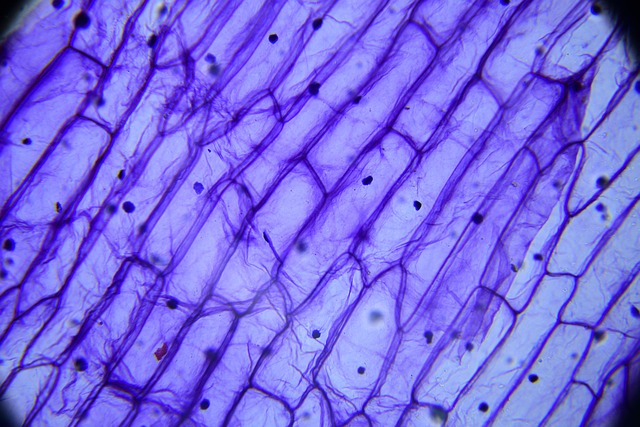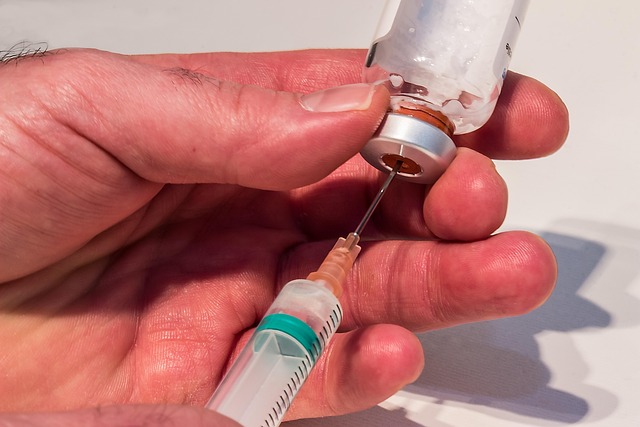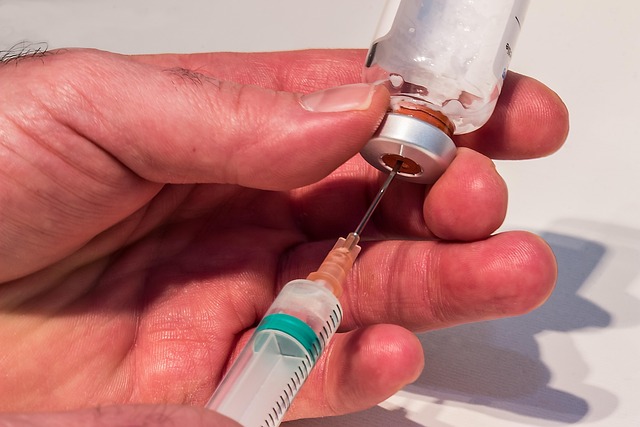GLP-1 drugs, targeting GLP-1 receptors in the pancreas, gut, and brain, offer a dual mechanism for diabetes management. They stimulate insulin secretion to lower glucose and inhibit glucagon release to prevent spikes. This approach enhances insulin sensitivity and suppresses excessive glucose production. Beyond blood sugar control, GLP-1 drugs also improve intestinal health by enhancing water and electrolyte secretion, nutrient absorption, and gut hormone regulation. While effective, they may cause gastrointestinal disturbances, requiring dose adjustments or alternative treatments. Ongoing research aims to develop more potent, longer-lasting GLP-1 drugs with reduced side effects, potentially revolutionizing diabetes therapy.
GLP-1 receptor agonists, or GLP-1 drugs, are revolutionizing diabetes management by mimicking natural insulin secretion and enhancing blood sugar regulation. This article delves into the intricate mechanism of action behind these innovative therapies, exploring key aspects such as understanding GLP-1 receptors, their role in regulating blood sugar, and the specific mechanisms through which agonists impact glucagon secretion, intestinal excretion, and gut hormone release. By highlighting both the benefits and potential side effects, we provide a comprehensive overview for healthcare professionals and patients alike.
Understanding GLP-1 Receptors: Key Players in Blood Sugar Regulation

GLP-1 receptors, or glucagon-like peptide-1 (GLP-1) receptors, are a type of hormone receptor that plays a pivotal role in regulating blood sugar levels. These receptors are located in various tissues, primarily in the pancreas, gut, and brain. When activated by GLP-1 drugs, these receptors initiate a series of cellular responses that work to lower blood glucose.
GLP-1 itself is a hormone produced in the intestine in response to food intake. By binding to its receptors, GLP-1 stimulates insulin secretion from the pancreas, which helps cells absorb glucose from the bloodstream. Additionally, it suppresses glucagon release, a hormone that raises blood sugar. This dual action of enhancing insulin and inhibiting glucagon is crucial for maintaining stable blood sugar levels, making GLP-1 drugs an effective treatment option for diabetes management.
The Role of GLP-1 Drugs in Mimicking Natural Insulin Secretion

GLP-1 receptor agonists, or GLP-1 drugs, play a pivotal role in mimicking natural insulin secretion processes within the body. These medications are designed to replicate the effects of the gut hormone glucagon-like peptide-1 (GLP-1), which is released in response to food intake. By activating GLP-1 receptors, these drugs stimulate insulin production by the pancreas, especially in a glucose-dependent manner. This mechanism ensures that insulin release aligns with blood sugar levels, mimicking the body’s natural response to meals.
Unlike traditional insulins, GLP-1 drugs have a unique advantage as they also suppress glucagon secretion. Glucagon is a hormone that increases blood sugar. By inhibiting its release, these drugs help prevent excessive glucose production by the liver, further contributing to improved blood sugar control. This dual action makes GLP-1 receptor agonists valuable tools in diabetes management, offering both insulin stimulation and glucagon suppression to achieve optimal glycemic balance.
Mechanisms Behind GLP-1 Agonist's Effect on Glucagon Secretion

GLP-1 receptor agonists exert their influence on glucagon secretion through a multifaceted mechanism. Primarily, these drugs enhance insulin secretion from beta cells in response to rising blood glucose levels. This effect is achieved by stimulating GLP-1 receptors, which trigger a cascade of intracellular signalling pathways. One key pathway involves the activation of protein kinase A (PKA), leading to increased insulin release and enhanced insulin sensitivity in peripheral tissues.
Beyond this, GLP-1 agonists also suppress glucagon secretion from alpha cells. By binding to GLP-1 receptors, they inhibit adenylate cyclase activity within alpha cells, reducing cAMP levels and subsequently decreasing glucagon production and release. This dual action of suppressing glucagon and enhancing insulin secretion contributes to the overall blood glucose-lowering effect of GLP-1 drugs, making them valuable therapeutic agents in diabetes management.
Impact on Intestinal Excretion and Gut Hormone Release

GLP-1 receptor agonists, a class of drugs designed to mimic the effects of the natural hormone GLP-1, have a significant impact on intestinal excretion and gut hormone release. When activated, these receptors stimulate various physiological responses in the gastrointestinal tract. One key effect is an increase in intestinal water and electrolyte secretion, leading to enhanced faecal output and improved gut motility. This mechanism not only promotes regular bowel movements but also aids in the absorption of nutrients by increasing intestinal fluidity.
Additionally, GLP-1 drugs stimulate the release of important gut hormones like glucagon-like peptide-2 (GLP-2), which enhances intestinal blood flow and supports the growth and integrity of intestinal cells. This dual action makes GLP-1 receptor agonists valuable in managing gastrointestinal disorders and has significant implications for their use in treating conditions such as type 2 diabetes and obesity, where both gut function and hormone regulation play crucial roles.
Benefits of Using GLP-1 Drugs for Type 2 Diabetes Management

GLP-1 receptor agonists, or GLP-1 drugs, offer a range of benefits for managing Type 2 diabetes. One key advantage is their ability to enhance insulin secretion in a glucose-dependent manner, which helps lower blood sugar levels effectively. This action is particularly beneficial during meals when blood glucose rises, providing a much-needed boost to the body’s natural insulin response.
Additionally, GLP-1 drugs reduce glucagon release, a hormone that raises blood sugar. By inhibiting glucagon secretion, these drugs contribute to a more stable blood glucose profile, which can lead to improved glycemic control. This dual action makes GLP-1 drugs a valuable tool in the management of Type 2 diabetes, offering both short-term and long-term benefits for patients’ overall health and well-being.
Potential Side Effects and Safety Considerations

GLP-1 receptor agonists, while effective in managing blood sugar levels and improving metabolic health, are not without potential side effects. Common adverse reactions include nausea, vomiting, diarrhea, abdominal pain, and constipation—often referred to as gastrointestinal disturbances. These symptoms are usually mild and transient but can be a cause for concern, especially during the initial stages of treatment. Patients may need time to adjust to these drugs, and in some cases, dose adjustments or alternative treatments might be considered to mitigate these side effects.
Safety considerations with GLP-1 drugs include monitoring for potential pancreatitis, as well as cardiovascular risks, such as heart failure or hypotension, though the evidence for these is mixed. Long-term studies are ongoing to better understand the comprehensive safety profile of these medications. Regular medical monitoring and open communication between patients and healthcare providers are essential to ensure optimal management and address any emerging concerns related to GLP-1 receptor agonist therapy.
Future Prospects: Ongoing Research in GLP-1 Receptor Agonist Therapy

The ongoing research in GLP-1 receptor agonist therapy paints a promising picture for the future of diabetes management and beyond. As scientists continue to unravel the intricate mechanisms of action, new avenues for drug development are emerging. One area of interest is the exploration of more potent and longer-lasting agonists, aiming to mimic the natural dynamics of GLP-1 peptides more closely. This could potentially lead to once-daily or even less frequent administrations, improving patient compliance and quality of life.
Additionally, researchers are delving into the off-target effects of these drugs, seeking ways to enhance their specificity while mitigating potential side effects. The development of personalized medicine approaches, tailored to individual patient needs, is another exciting prospect. These advancements promise to refine GLP-1 drug therapy, making it more accessible, effective, and aligned with the unique characteristics of each patient’s condition.
